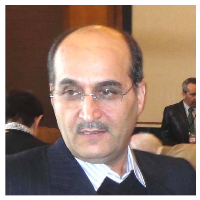Investigating the factors controlling the response of Mountain Rivers to extreme flood event (Case study: upstream of Ilam dam (
Author(s):
Article Type:
Case Study (دارای رتبه معتبر)
Abstract:
Introduction A major issue has been the role of large floods in comparison to more frequent floods with lower magnitude. This work addresses the geomorphic response of Mountain Rivers to extreme floods, exploring the relationships between morphological changes and controlling factors. In October 2015, following the occurrence of extreme and sudden rainfall, a large and devastating flood occurred in Ilam province. The floods caused major changes in the morphology of Ilam's rivers and it was accompanied by a considerable extension. The rate of channel expansion in different sections of the studied rivers varied, which led us to examine the influential and controlling factors that led to the diversity of river behavior.The working hypothesis was that explanation of geomorphic effects requires models that include other variables (e.g: lateral confinement, degree of sediment) besides hydraulic related variables (cross-sectional or unit stream power). The main aim was thus to explore the relationship between channel widening and arrange of controlling factors.Other specific aim addressed were which channel width (i.e: pre- or post-flood width) should be considered to calculate unit stream power in order to have a better explanation of channel response? Since few studies have been done in this field, this research was conducted with the aim of investigating the factors controlling the response of Mountain Rivers to extreme flood events in upstream of Ilam dam. Materials and methods The research was conducted on three tributaries of the Konjancham River (upstream of Ilam dam) whose catchments were affected by an extreme flood on 7th October 2015. An integrated approach was deployed to study this flood, including (i) Analysis of channel width changes by comparing aerial photographs taken before and after the flood, (ii) Estimate of peak discharges in studied reaches, (iii) Determine the degree of sedimentation in studied reaches. Delineation of spatial units was carried out according to the approach proposed by Rinaldi et al. (2013), which is a modification of the approach by Brierley and Fryirs (2005).According to that approach, stream sectors were defined as macro reaches having similar characteristics in terms of lateral confinement, while reaches are homogeneous also in terms of channel morphology (channel pattern, width, slope) and hydrology. We used the reach scale (reach length was commonly from 200 to 1300 m) for an overall assessment of magnitude of channel changes and for a preliminary investigation of controlling factors. The dominant process observed in the study reaches was channel widening, which was analyzed in detail by comparing aerial photographs taken before and after the flood. To assess changes in channel width, channel banks, and islands, these features were digitized on pre- and post-flood orthophotos. Channel width was calculated dividing channel area by the length of the reach, and changes in channel width were expressed as a width ratio (channel width after/channel width before the flood).The estimation of peak discharges used to calculate cross-sectional stream power and unit stream power. The last part of the methodological section deals with statistical analysis carried out to explain channel response to the flood event, by exploring the relationships between changes in channel width and controlling factors. Results and Discussion The relationships between the degree of channel widening and possible controlling factors were explored using multiple regression analysis. The analysis was carried out for the widening (width ratio) at reach scale.The whole data set includes 38 reaches. Seven controlling variables were considered (confinement index, percentage of reach length with artificial structures, degree of sedimentation, channel slope, cross-sectional stream power, and unit stream power calculated using pre-flood and post-flood channel width), but each regression model incorporated only three to four variables. Each model included only one of the variables expressing potential or flood flow energy (channel slope, cross-sectional stream power, unit stream power). All four multiple regression models turned out to be significant (p< 0.001) and gave high coefficients of multiple determination (R2and adjusted R2 ranged between 0.73 and 0.8 and between 0.69 and 0.77, respectively). The best model was the one including unit stream power calculated based on pre flood channel width and confinement indexas explanatory variables. Conclusion Results confirmed the main hypothesis of this work that hydraulic variables alone are not sufficient to explain channel response to an extreme flood event. The inclusion of other factors, specifically lateral confinement, degree of sedimentation, and percentage of reach length with artificial structures, led to satisfactory models explaining the observed variability in the degree of channel widening. These results suggest that the widening process is essentially controlled by two factors: flood power and valley confinement. Notably, flood duration above a critical threshold was not included in our analysis, but it is a variable that very likely would increase the robustness of regression models in these reaches. The analysis carried out in the three subcatchments of the Konjancham River basin showed that unit stream power calculated based on pre-flood channel width has stronger relations with channel widening in comparison to unit stream power calculated based on post-flood channel width and to cross-sectional stream power. Because peak discharge was used for stream power calculation, we are aware that neither pre-flood nor post-flood channel width is actually appropriate for the estimation of unit stream power, as the most appropriate would be the (unknown) width at the flood-peak time. The fact that using the pre-flood width gives better relations with the degree of channel widening (width ratio) could suggest that most width changes occurred after the flood peak.
Keywords:
Language:
Persian
Published:
Physical Geography Research Quarterly, Volume:51 Issue: 107, 2019
Pages:
1 to 15
magiran.com/p2006267
دانلود و مطالعه متن این مقاله با یکی از روشهای زیر امکان پذیر است:
اشتراک شخصی
با عضویت و پرداخت آنلاین حق اشتراک یکساله به مبلغ 1,390,000ريال میتوانید 70 عنوان مطلب دانلود کنید!
اشتراک سازمانی
به کتابخانه دانشگاه یا محل کار خود پیشنهاد کنید تا اشتراک سازمانی این پایگاه را برای دسترسی نامحدود همه کاربران به متن مطالب تهیه نمایند!
توجه!
- حق عضویت دریافتی صرف حمایت از نشریات عضو و نگهداری، تکمیل و توسعه مگیران میشود.
- پرداخت حق اشتراک و دانلود مقالات اجازه بازنشر آن در سایر رسانههای چاپی و دیجیتال را به کاربر نمیدهد.
دسترسی سراسری کاربران دانشگاه پیام نور!
اعضای هیئت علمی و دانشجویان دانشگاه پیام نور در سراسر کشور، در صورت ثبت نام با ایمیل دانشگاهی، تا پایان فروردین ماه 1403 به مقالات سایت دسترسی خواهند داشت!
In order to view content subscription is required
Personal subscription
Subscribe magiran.com for 70 € euros via PayPal and download 70 articles during a year.
Organization subscription
Please contact us to subscribe your university or library for unlimited access!



